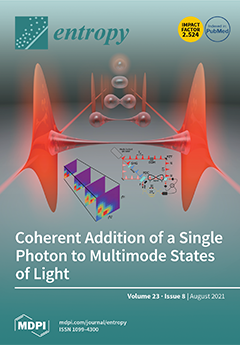A Dirichlet polynomial
d in one variable
is a function of the form
for some
. We will show how to think of a Dirichlet polynomial as a set-theoretic bundle, and thus as an empirical distribution. We can then consider the Shannon entropy
of the corresponding probability distribution, and we define its
length (or, classically, its
perplexity) by
. On the other hand, we will define a rig homomorphism
from the rig of Dirichlet polynomials to the so-called
rectangle rig, whose underlying set is
and whose additive structure involves the weighted geometric mean; we write
, and call the two components
area and
width (respectively). The main result of this paper is the following: the rectangle-area formula
holds for any Dirichlet polynomial
d. In other words, the entropy of an empirical distribution can be calculated entirely in terms of the homomorphism
h applied to its corresponding Dirichlet polynomial. We also show that similar results hold for the cross entropy.
Full article






